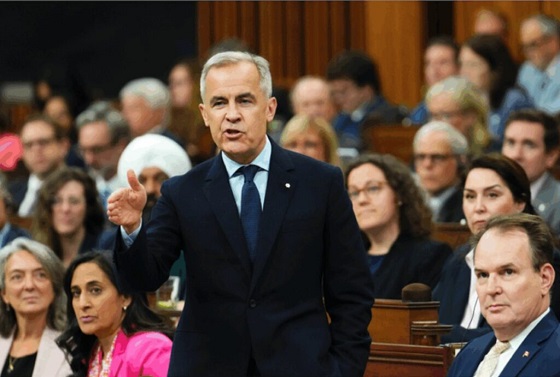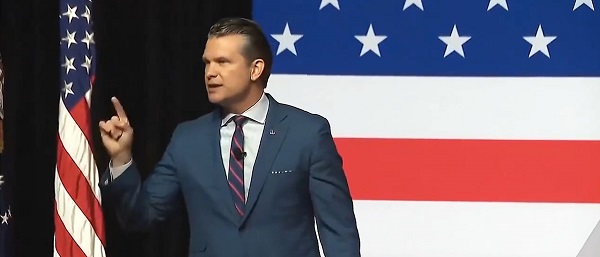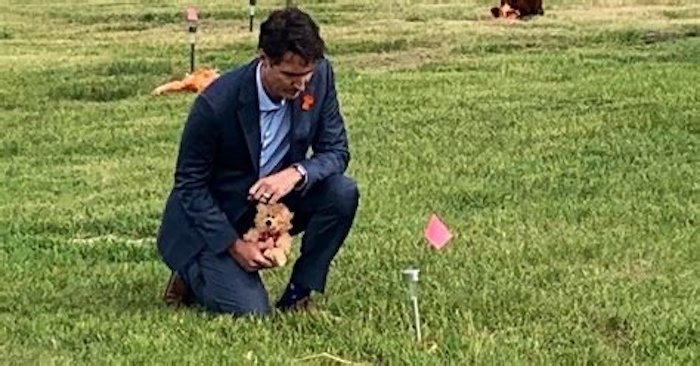Alberta
Close contact businesses to be closed – Gatherings no larger than 15 people – Protection for renters

From the Province of Alberta COVID-19 Update – March 27
Additional restrictions to stop spread of COVID-19
To protect the health and safety of Albertans, mass gatherings will be limited to 15 people and more restrictions will be placed on available services.
As a result of the evolving COVID-19 pandemic, attendance at certain businesses and organizations across the province will be prohibited effective immediately.
“This was a difficult decision to make, but we must do everything we can to protect the safety of Albertans and limit the spread of COVID-19. Grocery stores, pharmacies, delivery services and other essential businesses will continue to provide Albertans with the goods and services they need, and we’ll look to Alberta’s business leaders to find innovate ways to continue remote operations and protect jobs. These businesses must do everything they can to safeguard the well-being of the hardworking employees on the front lines.”
Restrictions will be in place for the following classifications of business:
- Close contact businesses including hair salons and barbershops, tattoo and piercing studios, esthetic services, as well as wellness studios and clinics and non-emergency and non-critical health services provided by regulated health professionals or registered professionals including dentistry, physiotherapy, massage, podiatry, chiropractic and optometry services.
- Dine-in restaurants will no longer be able to offer dine-in service. Take-out and delivery services will continue to be available.
- Non-essential retail services that fall into the categories of clothing, computer and gaming stores, and services in shopping malls and shopping centres such as hobby and toys, gift and specialty items and furniture.
A more complete list of affected businesses is available online.
In addition, people are prohibited from attending gatherings of more than 15, and they must observe two metres of social distancing. This includes:
- open spaces such as trails, fields and parks
- public and private gatherings where people are brought together in a single room or space at the same time, including funerals, weddings and other formal and informal events
Further details on gathering restrictions are available online.
Workplaces that have not been ordered to close can continue to have more than 15 workers on a worksite as long as those business maintain public health measures, including two metre social distancing, hygiene enforcement and processes that ensure that any person who is ill does not attend these spaces.
“These are aggressive measures and we don’t take them lightly. We need to do everything we can to flatten the curve and keep people healthy. I strongly encourage all Albertans to stay close to home as we are all in this together. Our collective action will protect our family, friends and neighbours.”
Any business or organization not following the public health order will be subject to a fine. Courts have the power to administer fines of up to $100,000 for a first offence and up to $500,000 for a subsequent offence for more serious violations. Individuals aware of any businesses violating these orders should submit a complaint online immediately.
Quick facts
- All Albertans have a responsibility to help prevent the spread. Take steps to protect yourself and others:
- practise social distancing
- stay home and away from others if sick or in isolation
- practise good hygiene – wash hands often for at least 20 seconds, cover coughs and sneezes, and avoid touching your face
- monitor for symptoms, such as cough, fever, fatigue or difficulty breathing
- Anyone who has health concerns or is experiencing symptoms of COVID-19 should complete an online COVID-19 self-assessment.
- For recommendations on protecting yourself and your community, visit alberta.ca/COVID19.
Increased security for Alberta rentersThe Government of Alberta is providing security for Alberta residential renters during the COVID-19 pandemic.This is part of an overall $7.7-billion package in direct supports and deferrals designed to relieve the immediate financial burden brought on by the crisis and provide stability during these unprecedented and uncertain times. The new protections mean:
Payment plans and eviction processWhile Alberta is in a state of public health emergency, landlords must attempt to work out a payment plan with tenants who are unable to make their full rent when payment is due. The Residential Tenancy Dispute Resolution Service (RTDRS) will not hear applications that could lead to eviction due to non-payment unless a reasonable attempt has been made to work out a payment plan. Rental increasesUntil the state of public health emergency has been lifted, landlords cannot raise the rent on residential properties or mobile home sites, even if notice of an increase has already been given. Late feesUntil June 30, landlords cannot further penalize tenants who are late on rent by charging late fees, even if the signed rental agreement states that a late fee can be applied. Landlords will also not be able to retroactively collect late fees for this period.
Quick facts
Alberta has a comprehensive response to COVID-19 including measures to enhance social distancing, screening and testing. Financial supports are helping Alberta families and businesses. |
Notes from Flight 163, the oilsands shuttle from Toronto to Edmonton
Alberta
Danielle Smith slams Skate Canada for stopping events in Alberta over ban on men in women’s sports

From LifeSiteNews
The Alberta premier has denounced Skate Canada as ‘disgraceful’ for refusing to host events in the province because of a ban on ‘transgender’ men in women’s sports.
Alberta Premier Danielle Smith has demanded an apology after Skate Canada refused to continue holding events in Alberta.
In a December 16 post on X, Smith denounced Skate Canada’s recent decision to stop holding competitions in Alberta due to a provincial law keeping gender-confused men from competing in women’s sports.
“Women and girls have the right to play competitive sports in a safe and fair environment against other biological females,” Smith declared. “This view is held by a vast majority of Albertans and Canadians. It is also common sense and common decency.”
Women and girls have the right to play competitive sports in a safe and fair environment against other biological females.
This view is held by a vast majority of Albertans and Canadians. It is also common sense and common decency.
Skate Canada‘s refusal to hold events in… pic.twitter.com/n4vbkTx6B0
— Danielle Smith (@ABDanielleSmith) December 16, 2025
“Skate Canada‘s refusal to hold events in Alberta because we choose to protect women and girls in sport is disgraceful,” she declared.
“We expect they will apologize and adjust their policies once they realize they are not only compromising the fairness and safety of their athletes, but are also offside with the international community, including the International Olympic Committee, which is moving in the same direction as Alberta,” Smith continued.
Earlier this week, Skate Canada announced their decision in a statement to CBC News, saying, “Following a careful assessment of Alberta’s Fairness and Safety in Sport Act, Skate Canada has determined that we are unable to host events in the province while maintaining our national standards for safe and inclusive sport.”
Under Alberta’s Fairness and Safety in Sport Act, passed last December, biological men who claim to be women are prevented from competing in women’s sports.
Notably, Skate Canada’s statement failed to address safety and fairness concerns for women who are forced to compete against stronger, and sometimes violent, male competitors who claim to be women.
Under their 2023 policy, Skate Canada states “skaters in domestic events sanctioned by Skate Canada who identify as trans are able to participate in the gender category in which they identify.”
While Skate Canada maintains that gender-confused men should compete against women, the International Olympic Committee is reportedly moving to ban gender-confused men from women’s Olympic sports.
The move comes after studies have repeatedly revealed what almost everyone already knew was true, namely that males have a considerable innate advantage over women in athletics.
Indeed, a recent study published in Sports Medicine found that a year of “transgender” hormone drugs results in “very modest changes” in the inherent strength advantages of men.
Additionally, male athletes competing in women’s sports are known to be violent, especially toward female athletes who oppose their dominance in women’s sports.
Last August, Albertan male powerlifter “Anne” Andres was suspended for six months after a slew of death threats and harassments against his female competitors.
In February, Andres ranted about why men should be able to compete in women’s competitions, calling for “the Ontario lifter” who opposes this, apparently referring to powerlifter April Hutchinson, to “die painfully.”
Interestingly, while Andres was suspended for six months for issuing death threats, Hutchinson was suspended for two years after publicly condemning him for stealing victories from women and then mocking his female competitors on social media. Her suspension was later reduced to a year.
Alberta
Alberta’s huge oil sands reserves dwarf U.S. shale

From the Canadian Energy Centre
By Will Gibson
Oil sands could maintain current production rates for more than 140 years
Investor interest in Canadian oil producers, primarily in the Alberta oil sands, has picked up, and not only because of expanded export capacity from the Trans Mountain pipeline.
Enverus Intelligence Research says the real draw — and a major factor behind oil sands equities outperforming U.S. peers by about 40 per cent since January 2024 — is the resource Trans Mountain helps unlock.
Alberta’s oil sands contain 167 billion barrels of reserves, nearly four times the volume in the United States.
Today’s oil sands operators hold more than twice the available high-quality resources compared to U.S. shale producers, Enverus reports.
“It’s a huge number — 167 billion barrels — when Alberta only produces about three million barrels a day right now,” said Mike Verney, executive vice-president at McDaniel & Associates, which earlier this year updated the province’s oil and gas reserves on behalf of the Alberta Energy Regulator.
Already fourth in the world, the assessment found Alberta’s oil reserves increased by seven billion barrels.
Verney said the rise in reserves despite record production is in part a result of improved processes and technology.
“Oil sands companies can produce for decades at the same economic threshold as they do today. That’s a great place to be,” said Michael Berger, a senior analyst with Enverus.
BMO Capital Markets estimates that Alberta’s oil sands reserves could maintain current production rates for more than 140 years.
The long-term picture looks different south of the border.
The U.S. Energy Information Administration projects that American production will peak before 2030 and enter a long period of decline.
Having a lasting stable source of supply is important as world oil demand is expected to remain strong for decades to come.
This is particularly true in Asia, the target market for oil exports off Canada’s West Coast.
The International Energy Agency (IEA) projects oil demand in the Asia-Pacific region will go from 35 million barrels per day in 2024 to 41 million barrels per day in 2050.
The growing appeal of Alberta oil in Asian markets shows up not only in expanded Trans Mountain shipments, but also in Canadian crude being “re-exported” from U.S. Gulf Coast terminals.
According to RBN Energy, Asian buyers – primarily in China – are now the main non-U.S. buyers from Trans Mountain, while India dominates purchases of re-exports from the U.S. Gulf Coast. .
BMO said the oil sands offers advantages both in steady supply and lower overall environmental impacts.
“Not only is the resulting stability ideally suited to backfill anticipated declines in world oil supply, but the long-term physical footprint may also be meaningfully lower given large-scale concentrated emissions, high water recycling rates and low well declines,” BMO analysts said.
-

 Daily Caller1 day ago
Daily Caller1 day agoParis Climate Deal Now Decade-Old Disaster
-

 armed forces2 days ago
armed forces2 days agoOttawa’s Newly Released Defence Plan Crosses a Dangerous Line
-

 Business18 hours ago
Business18 hours agoOttawa Pretends To Pivot But Keeps Spending Like Trudeau
-

 Energy18 hours ago
Energy18 hours agoLiberals Twisted Themselves Into Pretzels Over Their Own Pipeline MOU
-

 Censorship Industrial Complex16 hours ago
Censorship Industrial Complex16 hours agoHow Wikipedia Got Captured: Leftist Editors & Foreign Influence On Internet’s Biggest Source of Info
-

 Alberta1 day ago
Alberta1 day agoAlberta’s huge oil sands reserves dwarf U.S. shale
-

 Community2 days ago
Community2 days agoCharitable giving on the decline in Canada
-

 Daily Caller1 day ago
Daily Caller1 day agoHegseth Planning Huge Shakeup Of Top Military Command: REPORT









